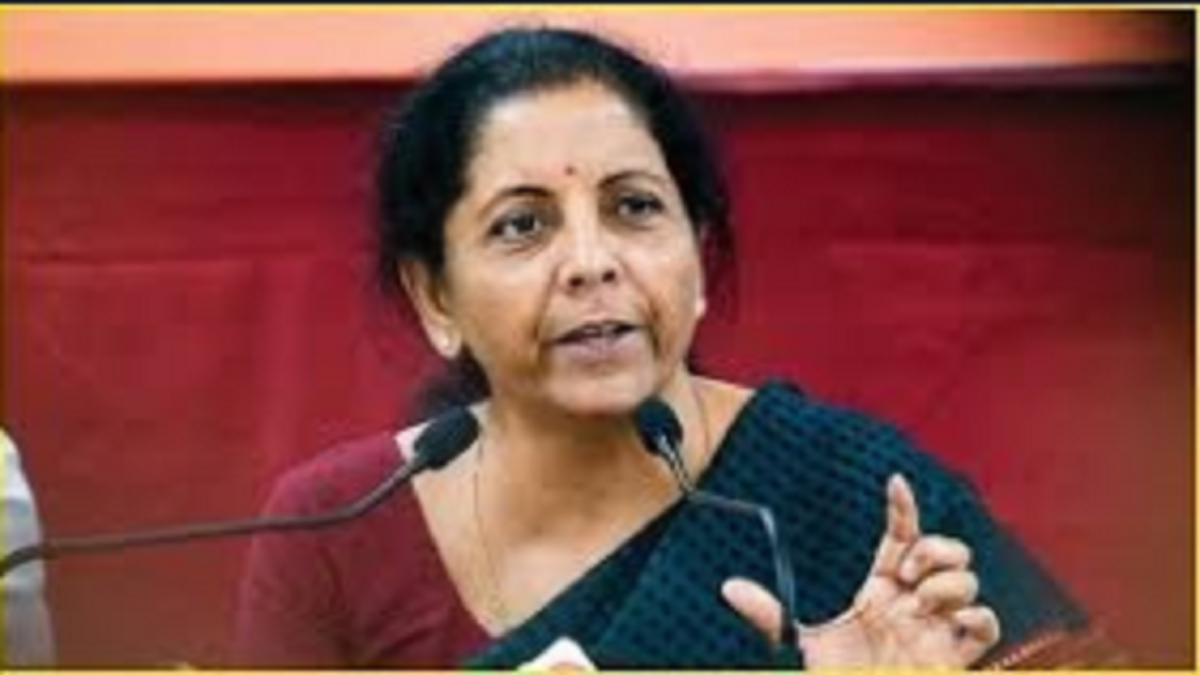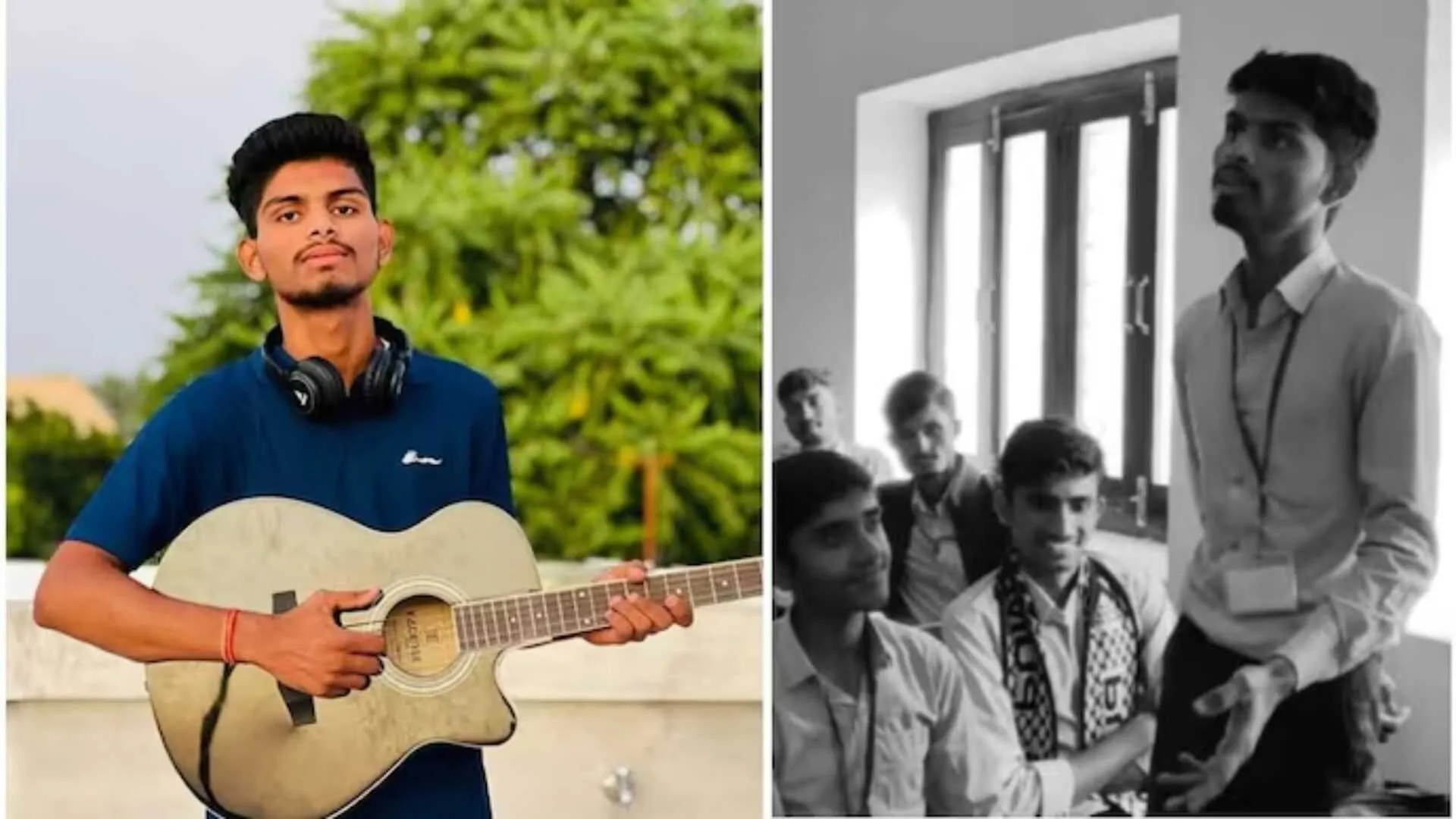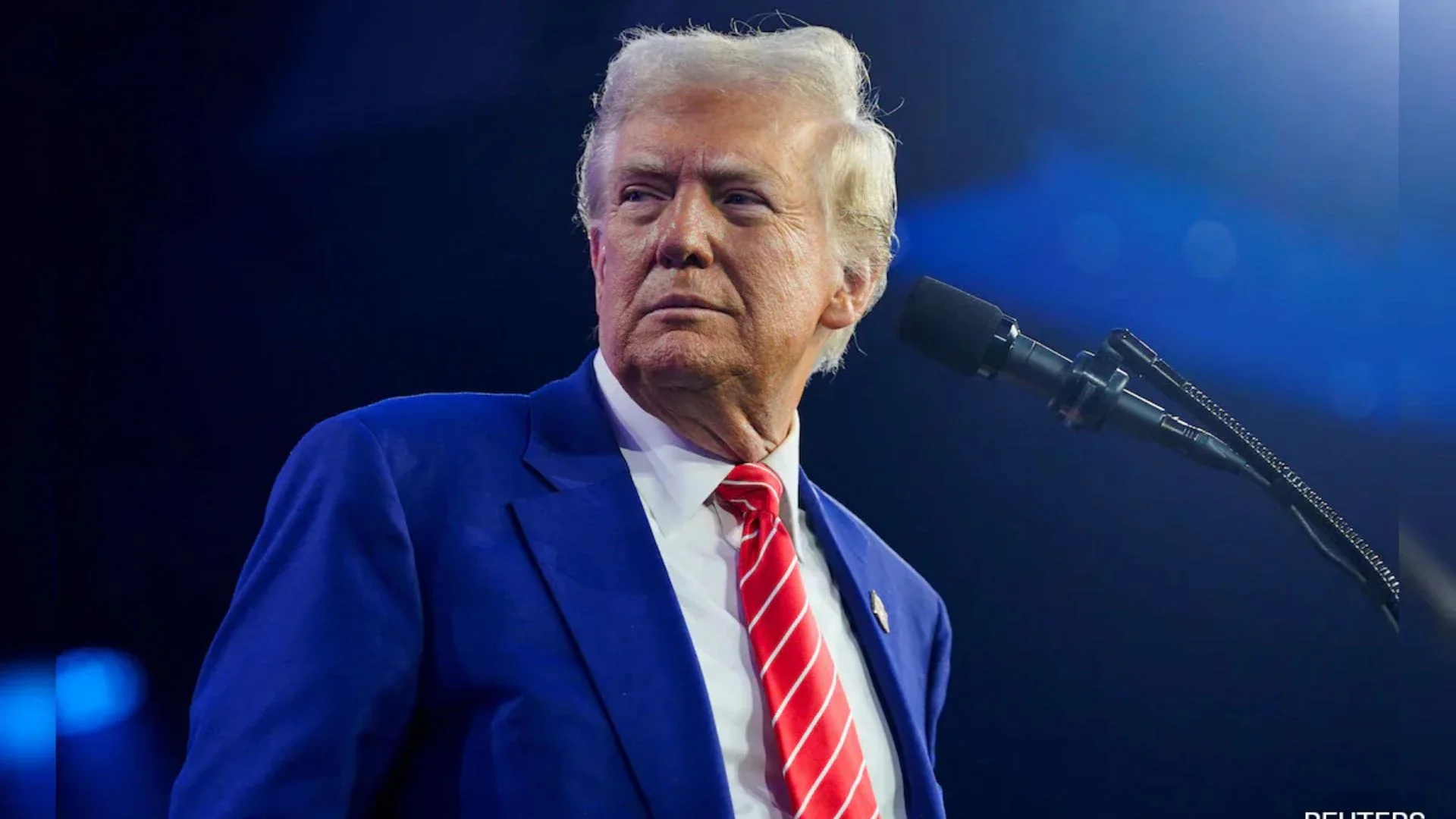Union Finance Minister Nirmala Sitharaman on Tuesday presented Union Budget 2022-23 in Parliament. Following are the key highlights of the annual budget:
• Total expenditure in 2022-23 estimated at Rs 39.45 lakh crore. Total receipts other than borrowings in 2022-23 estimated at Rs 22.84 lakh crore
• Fiscal deficit in the current financial year is estimated to rise to 6.9 per cent of GDP against 6.8 per cent in Budget Estimates.
• For 2022-23 financial year the fiscal deficit is pegged at 6.4 per cent of GDP. A target set to reduce fiscal deficit to 4.5 per cent of GDP by 2025-26.
• Allocation of Rs 1 lakh crore in 2022-23 to assist the states in catalysing overall investments in the economy: fifty-year interest-free loans, over and above normal borrowings
• In 2022-23, States will be allowed a fiscal deficit of 4 per cent of GSDP, of which 0.5 per cent will be tied to power sector reforms.
• On the Direct Tax side, the budget allows taxpayers to file updated income tax return within 2 years for correcting errors. It also provides tax relief to persons with disability.
• Alternate Minimum Tax paid by cooperatives brought down from 18.5 per cent to 15 per cent. Surcharge on cooperative societies reduced from 12 per cent to 7 per cent for those having a total income of more than Rs 1 crore and up to Rs 10 crore.
• Tax relief to persons with disability: Payment of annuity and lump sum amount from insurance scheme to be allowed to differently abled dependent during the lifetime of parents/guardians, i.e., on parents/ guardian attaining the age of 60 years.
• Parity in National Pension Scheme Contribution: Tax deduction limit increased from 10 per cent to 14 per cent on employer’s contribution to the NPS account of State Government employees.
• Gems and Jewellery: Customs duty on cut and polished diamonds and gemstones being reduced to 5 per cent; Nil customs duty to simply sawn diamond – To give a boost to the Gems and Jewellery sector.
• A simplified regulatory framework to be implemented by June this year – To facilitate export of jewellery through e-commerce.
• Tariff measure to encourage blending of fuel: Unblended fuel to attract an additional differential excise duty of Rs 2/ litre from October 1, 2022 to encourage blending of fuel.
• A Digital University will be established to provide access to students across the country for world-class quality universal education with personalised learning experience at their doorsteps. This will be made available in different Indian languages and ICT formats.
• The Government proposed to introduce Digital Rupee, using blockchain and other technologies, to be issued by the Reserve Bank of India starting 2022-23 for more efficient and cheaper currency management system.
• Indian economy is projected to grow at 9.2 per cent in 2021-22. This will be the highest among all large economies in the world.
• Productivity Linked Incentive (PLI) scheme in 14 sectors to create 60 lakh jobs. PLI schemes have the potential to create an additional production of Rs 30 lakh crore.
• Entering Amrit Kaal, the 25 year long lead up to India @100, the budget provides impetus for growth along four priorities: PM GatiShakti, Inclusive Development, Productivity Enhancement & Investment, Sunrise opportunities, Energy Transition, and Climate Action and Financing of investments.
• The seven engines that drive PM GatiShakti are Roads, Railways, Airports, Ports, Mass Transport, Waterways and Logistics Infrastructure.
• The scope of PM GatiShakti National Master Plan will encompass the seven engines for economic transformation, seamless multimodal connectivity and logistics efficiency.
• National Highways Network to be expanded by 25000 kms in 2022-23. Rs 20000 crore to be mobilised for National Highways Network expansion in 2022-23.
• Contracts to be awarded through PPP mode in 2022-23 for implementation of Multimodal Logistics Parks at four locations.
• Railways: 2000 kms of railway network to be brought under Kavach, the indigenous world class technology and capacity augmentation in 2022-23. 400 new generation Vande Bharat Trains to be manufactured during the next three years. 100 PM GatiShakti Cargo terminals for multimodal logistics to be developed during the next three years.
• One Station One Product concept to help local businesses & supply chains.
• Agriculture: Rs 2.37 lakh crore direct payment to 1.63 crore farmers for procurement of wheat and paddy. Chemical-free Natural farming to be promoted throughout the county. Initial focus is on farmer’s lands in 5 kms wide corridors along river Ganga.
• NABARD to facilitate fund with blended capital to finance startups for agriculture & rural enterprise.
• ‘Kisan Drones’ for crop assessment, digitisation of land records, spraying of insecticides and nutrients.
• Ken Betwa project: 1400 crore outlay for implementation of the Ken – Betwa link project. 9.08 lakh hectares of farmers’ lands to receive irrigation benefits by Ken-Betwa link project.
• MSMEs: Udyam, e-shram, NCS and ASEEM portals to be interlinked.
• 130 lakh MSMEs provided additional credit under Emergency Credit Linked Guarantee Scheme (ECLGS). ECLGS to be extended up to March 2023.
• Guarantee cover under ECLGS to be expanded by Rs 50000 crore to total cover of Rs 5 Lakh crore.
• Rs 2 lakh Crore additional credit for Micro and Small Enterprises to be facilitated under the Credit Guarantee Trust for Micro and Small Enterprises (CGTMSE).
• Raising and Accelerating MSME performance (RAMP) programme with outlay of Rs 6000 crore to be rolled out.
• Digital Ecosystem for Skilling and Livelihood (DESH-Stack e-portal) will be launched to empower citizens to skill, reskill or upskill through on-line training. Startups will be promoted to facilitate ‘Drone Shakti’ and for Drone-As-A-Service (DrAAS).
• Health: An open platform for National Digital Health Ecosystem to be rolled out. ‘National Tele Mental Health Programme’ for quality mental health counselling and care services to be launched.
• A network of 23 tele-mental health centres of excellence will be set up, with NIMHANS being the nodal centre and International Institute of Information Technology-Bangalore (IIITB) providing technology support.
• Rs. 60,000 crore allocated to cover 3.8 crore households in 2022-23 under Har Ghar, Nal se Jal.
• Housing for All: Rs 48,000 crore allocated for completion of 80 lakh houses in 2022-23 under PM Awas Yojana.
• New scheme PM-DevINE launched to fund infrastructure and social development projects in the North-East. An initial allocation of Rs 1,500 crore made to enable livelihood activities for youth and women under the scheme.
• 100 per cent of 1.5 lakh post offices to come on the core banking system. Scheduled Commercial Banks to set up 75 Digital Banking Units (DBUs) in 75 districts.
• E-Passports with embedded chip and futuristic technology to be rolled out.
• Scheme for design-led manufacturing to be launched to build a strong ecosystem for 5G as part of the Production Linked Incentive Scheme.
• Export Promotion: Special Economic Zones Act to be replaced with a new legislation to enable States to become partners in ‘Development of Enterprise and Service Hubs’.
• Defence: 68 per cent of capital procurement budget earmarked for the domestic industry in 2022-23, up from 58 per cent in 2021-22. Defence R&D to be opened up for industry, startups and academia with 25% of defence R&D budget earmarked.
• Independent nodal umbrella body to be set up for meeting testing and certification requirements.
• Government contribution to be provided for R&D in Sunrise Opportunities like Artificial Intelligence, Geospatial Systems and Drones, Semiconductor and its eco-system, Space Economy, Genomics and Pharmaceuticals, Green Energy, and Clean Mobility Systems.
• Additional allocation of Rs. 19,500 crore for Production Linked Incentive for manufacture of high-efficiency solar modules to meet the goal of 280 GW of installed solar power by 2030.
• Outlay for capital expenditure stepped up sharply by 35.4 per cent to Rs 7.50 lakh crore in 2022-23 from Rs 5.54 lakh crore in the current year. The outlay in 2022-23 to be 2.9 per cent of GDP.
• ‘Effective Capital Expenditure’ of Central Government estimated at Rs 10.68 lakh crore in 2022-23, which is about 4.1 per cent of GDP.
• Digital Rupee: Introduction of Digital Rupee by the Reserve Bank of India starting 2022-23.
• Enhanced outlay for “Scheme for Financial Assistance to States for Capital Investment”: From Rs 10,000 crore in Budget Estimates to Rs 15,000 crore in Revised Estimates for current financial year.
A DIGITAL REVOLUTION: INDUSTRY REACTS TO BUDGET
Right from the Finance Minister’s use of a Tablet to propose the budget, explained that India is on the path of a digital revolution in the near future. As expected, the government has well thought to reduce the digital learning gap between the urban and rural by introducing “1-Class-1-TV channel” covering multiple regional languages, which will not only counter the learning losses but will bridge the learning gap. The PM’s e-Vidya will be further expanded from 12 to 200 channels to facilitate supplementary learning. For the implementation of NEP 2020 great stress is implied on shifting the focus on Upskilling, therefore the launch of Digital DESH e-portal for skilling, upskilling and reskilling will be the key to newer dynamics. DR SILPI SAHOO, CHAIRPERSON, SAI INTERNATIONAL EDUCATION GROUPDR SILPI SAHOO, CHAIRPERSON, SAI INTERNATIONAL EDUCATION GROUP
Right to Education was adopted by Government of India a long time ago. With Budget 2022, we see the government providing students with Right to Quality Education. We are particularly ecstatic to note that the Government seeks to take fibre-based internet connection to every village in India by 2023 and expand its “One Class, One Channel” program, as it will enable under-served students in Bharat to access quality education.LEHAR TAWDE, CO-FOUNDER, CONNECTED
The initiative of National Digital Health Ecosystem, is a forward-looking thought for the wellbeing of millions of citizens, especially in these hard times of the pandemic. The digital ecosystem will consist of digital registries of health providers and health facilities. We hope a considerable amount will be allocated for private sector healthcare companies, and strengthen the way for public-private partnerships.GAUTAM CHOPRA, FOUNDER AND CEO, BEATO
The idea of Digital university will help India set a top-notch world-class education. We believe that knowledge and awareness will support India becoming Aatmanirbhar and through the expansion of the One class, One TV channel’ program of PM eVIDYA this cause will be highly achievable. Regional languages will be empowered through this program.PULKIT SHARMA, CO FOUNDER AND CEO, KHABRI
Firstly, would like to appreciate our government extending the tax initiatives for startups up to March 2023. Through tax initiatives and new reforms in the direct tax, the startup ecosystem will enhance effectively within no time. The idea of launching a digital university will help understand people the culture of India through world-class education. The Introduction of digital currency by the central bank will definitely lead away to cheaper currency management.CHETAN KUMAR, CO-FOUNDER, EKANK TECHNOLOGIES
We support the government’s focus on technology, it will help many tech based companies like World of Play to come up with exciting product experience for the Indian consumers. We welcome the focus of government on the wearables and acoustic component ecosystem and domestic manufacturing and believe on a long term, this focus will make India as a formidable design and manufacturing powerhouse. As a brand, we promote and follow Make in India and we believe long-term policies like this will give us the desired support for the local design and also manufacturing in India..VIKAS JAIN, CO FOUNDER AND CEO, WORLD OF PLAY
We welcome the Finance Minister’s increased focus on the consumer electronics industry and formation technology, which will definitely benefit all worldwide companies, including ours. The 2022 Union Budget allocated Rs 1.97 lakh crore ($26 billion) for PLI projects, notably electronic components, which are among the 13 vital sectors that would undoubtedly help our economy expand. Furthermore, reduced customs taxes will encourage electronics manufacture, which will benefit the electronics industry.”VIJAY KUMAR MIKKILINENI, HEAD OF MARKETING, TCL INDIA
It is very encouraging to see that the Union Budget has taken into consideration some of the long-pending suggestions for the Animation, Visual Effects, Gaming, and Comics (AVGC) sector, while noting the strong potential this industry holds for employment-generation as well as taking ‘Made in India’ game titles global. We welcome the Hon’ble Finance Minister’s announcement to set up an AVGC Promotion Task Force to provide a much-needed boost to the sector. We are hopeful that with the positive support of the government, the coming years will see online gaming, VFX and esports startups leading the charge in the global economy.SAI SRINIVAS, CO-FOUNDER AND CEO, MOBILE PREMIER LEAGUE (MPL)
National Digital Health Ecosystem is an extension of the various initiatives announced under Ayushman Bharat Digital Mission in the last couple of months. Digital health register will help create a comprehensive interoperable network to store and fetch health records. An open platform will encourage wider adoption and innovation encompassing start ups, ensuring an UPI like adoption. Key will be to extend the coverage to million plus providers in the country and bring them on this platform. A start has to be made by integrating existing registries. This will need centre-state cooperation, health being a state subject.DR RANA MEHTA, PARTNER AND LEADER HEALTHCARE, PWC INDIA.
The Union Budget 2022 has recognized the digital growth of the country as a primary focus. In order to promote cleaner mobility, the battery swapping policy and interoperability standards that government plans to introduce, incorporates the concept of energy/battery as a service. This will also help in developing the charging station ecosystem which is imperative for massification of EVs. The announcement will give impetus to the private sector to develop sustainable and innovative business models for battery and energy as a service. The plan to roll out E- passports with embedded chip and futuristic technology, digital rupee using blockchain by RBI, Drone Shakti and Kisaan Drones and opening Defence R&D for industry, startups and academia are welcome moves that will accelerate the growth and development of the semiconductor industry in the country.SANJAY GUPTA, VICE PRESIDENT AND INDIA MANAGING DIRECTOR, NXP SEMICONDUCTORS
The Restaurant Industry was eagerly looking at some immediate liquidity support, Restoration of Input Tax Credit (ITC) on GST, Ease of Doing Business from over regulation and excessive licensing, a fair & equitable E-Commerce Policy for the survival and revival of the Restaurant Sector from the Hon’ble Finance Minister today. While the Hospitality Sector was mentioned for the first time by Smt. Nirmala Sitharaman when she announced the extension of Emergency Credit Line Guarantee Scheme (ECLGS) till March 2023, which will allow one-year moratorium extension for loans availed under the ECLGS Scheme, but it may ease current liquidity issues only for some businesses which have existing credit lines or outstanding sanction available loans. It was very disappointing to see that no specific announcements were made for the restaurant industry and we are yet again left to fend for ourselves.KABIR SURI, PRESIDENT, NATIONAL RESTAURANT ASSOCIATION OF INDIA (NRAI)
The Centre had already taken big steps to build a digital health ecosystem through the establishment of the Ayushman Bharat Digital Mission (ABDM). The importance given to high-quality healthcare, the plan for a National Digital Health Ecosystem, the tele mental health program and the extension of the tax breaks to startups in this budget are all measures in the right direction. We highly welcome the implementation of such measures.DR SURENDRA K CHIKARA, FOUNDER & CEO, BIONE
The Union Budget presented by honourable Finance Minister Nirmala Sitharaman has a focus on the growth trajectory of India and is a progressive budget. Among, other pointers, the budget laid emphasis on the increase of capital expenditure to drive growth and the repeated focus on “infrastructure” implies that the scope of professions related to all aspects of infrastructure are going to rise. The budget will boost the overall real estate sector with a continued priority on affordable housing. The emphasis on a paradigm change of the urban sector through the involvement of the stakeholders at multiple levels is a welcome step.DR SUBHALAXMI MOHAPATRA ASSOCIATE PROFESSOR AND CO-DIRECTOR, CENTRE FOR URBANISM AND CULTURAL ECONOMICS, ANANT NATIONAL UNIVERSITY
The Union Budget 2022-23 has struck the right balance between addressing the immediate social and economic concerns, caused mainly by the Covid-19 pandemic, and equipping India for a sustained growth for the next 25 years. It has given adequate focus on improving the livelihood opportunities—as the income of nearly 84% of the households in the country has been adversely affected by the pandemic. Quite rightly, it bets on skill development of farmers, women, and the youth on this front. Introducing digital and high tech services in the agriculture and allied sectors, which currently provides employment to 45% of the population, will make these sectors more attractive and more remunerative for the youth. The proposed launch of Digital Ecosystem for Skilling and Livelihood to empower citizens to skill, re-skill or upskill through on-line training, is another milestone. The Finance Minister should be lauded for increasing the budgetary allocations to Mission Sakthi, Mission Vatsalya and PM Poshan projects that would greatly benefit women. The budget will also have a very positive impact on child development. It targets to convert nearly two lakh anganwadis into Saksham Anganwadis, the new generation anganwadis with better infrastructure, and clean energy.
SUMANTA KAR, SECRETARY GENERAL, SOS CHILDREN’S VILLAGES OF INDIA





















